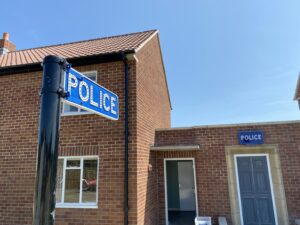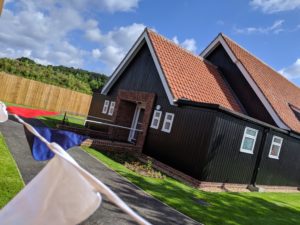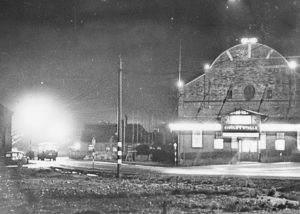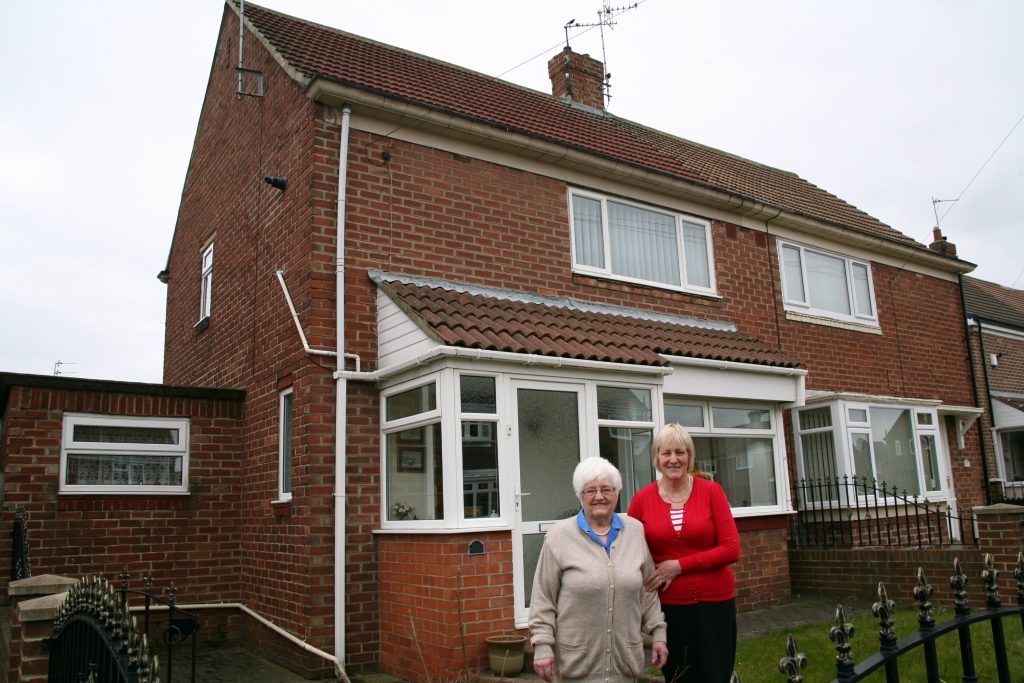Complete
As part of The 1950s Town, we have replicated a pair of semi-detached houses from Red House in Sunderland.
Visitors to the semi-detached council houses will be able to learn about the expansion of housing in the 1950s and what life on a new housing estate was like.
Following the Second World War, a massive expansion of housing stock was needed to help with overcrowding and slums, as well as those displaced by war damage. The North East undertook one of the largest expansions of housing in Britain after the Second World War to tackle these issues. In particular, places like Sunderland added numerous new estates on the edge of the city, including the estates of Thorney Close, Pennywell and Red House.
There was no uniform council house that was built after the Second World War in the North East. Instead, council planning departments usually centred their designs around the needs of families balanced with the cost of providing for these needs. For most people moving into a council house this would have been their first experience of an indoor bathroom.
As the pressure for new housing outweighed other issues, estates very quickly became full of people, whilst having no amenities. Although spaces were often left for churches, shops and allotments, the provision for these was not fulfilled until a few years after the houses had been occupied. Often, houses were moved into before electricity supplies had been connected, and provisions were supplied by a series of vans selling everything from food to hardware and clothing.
To decide which council house we would be replicating at the museum, a competition was launched where people were invited to nominate their own 1950s house. Properties had to be semi-detached and built in the North East between 1950 and 1959 as council housing. People could even nominate 50s houses that had since been knocked down.
Following a public vote, Esther Gibbon and her daughter Linda Gilmore were announced the winners out of nine finalists. A replica of their semi-detached house in Red House, Sunderland, has been built in The 1950s Town.
45 Rochdale Road
The Remaking Beamish Team worked closely with Esther and her daughters, Linda and Brenda, gathering memories of their time living in the house. Sadly, Esther died in December 2019 but we continued to work with Linda and Brenda on the project.
Esther and her family moved into the house when it was built in 1952. Before moving to Red House, the family lived in two rooms in Dock Street, Monkwearmouth in Sunderland. Looking back on this, Brenda said: “Here we had no kitchen, or bathroom, or running water within the property. An outside toilet and standing tap in the yard were shared by all the families who lived in the tenement house at that time. Mam and dad were married in 1947. Their eldest child, Joan, was born in July 1948 and I came along in August 1951. When we moved to our new house, I was 15 months old and Joan was four years old.
“When we moved to Red House, it was like living in the countryside for us. The small estate was surrounded by farmland. The neighbours, on the whole, were young families and like ours, were apart from their extended families for the first time. Almost all of the mothers were stay at home housewives, and so there was a lot of social mixing between the families during the day.”
Brenda has very fond memories of her childhood on the Red House estate. “We were very fortunate to live in a cosy home, with parents who were very happy, with each other and their lifestyle. Things could have been easier financially, but I didn’t feel that we were missing out on anything at that time. We had the things that mattered and so we were very lucky living in our own little palace, with the people we loved most in the world.”
47 Rochdale Road
In the second of the semi-detached houses, we’ll be telling the story of Polish migration to the North East in the 1950s. Following the German and Russian invasions of Poland in September 1939, the Polish government along with Polish soldiers, airmen and sailors made their way, firstly to France, and then to Britain, joining the allies in the fight against Nazism. Meanwhile many from the East of the country were transported to Siberia, and were only released to form the Polish 2nd Army under General Anders after Germany attacked Russia in 1941.
After the Second World War, many Polish troops who fought alongside the British were unable or unwilling to return to Poland and, in 1946, it was announced that the Polish Resettlement Corps was to be formed as a body of the British Army. Those who fought under British command were eligible to join in recognition of the bravery they had shown. Passed in 1947, the Polish Resettlement Act was the first ever mass immigration legislation and allowed more than 220,000 Polish people to either return to Poland, settle in the UK or emigrate to other countries.
We have worked with several families on the project. The stories, experiences and objects belonging to each family will be combined so that we can tell the story of Polish migration.
One of the families we’ve worked with is the Malecki family. After the war, Roman Malecki, a bombardier in the artillery of the Polish Second Corps, remained in the UK and turned to the Polish Resettlement Corps for support.
His son Ray said: “It’s wonderful to be able to share my dad’s story. He was a lovely guy, got on with people very, very well and by the time he passed away, he could talk Geordie as well as anyone else.”
Related Exhibits
Police Houses

A pair of police houses from Heworth, Gateshead, and their associated single-storey office, have been replicated at Beamish.
Read moreLeasingthorne Colliery Welfare Hall and Community Centre

Our welfare hall was the first building to open in The 1950s Town!
Read moreThe Grand Cinema

Lights, camera, action – The Grand will give visitors the chance to experience a trip to the cinema during the 1950s.
Read more
